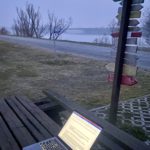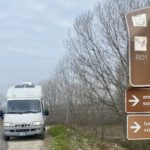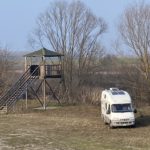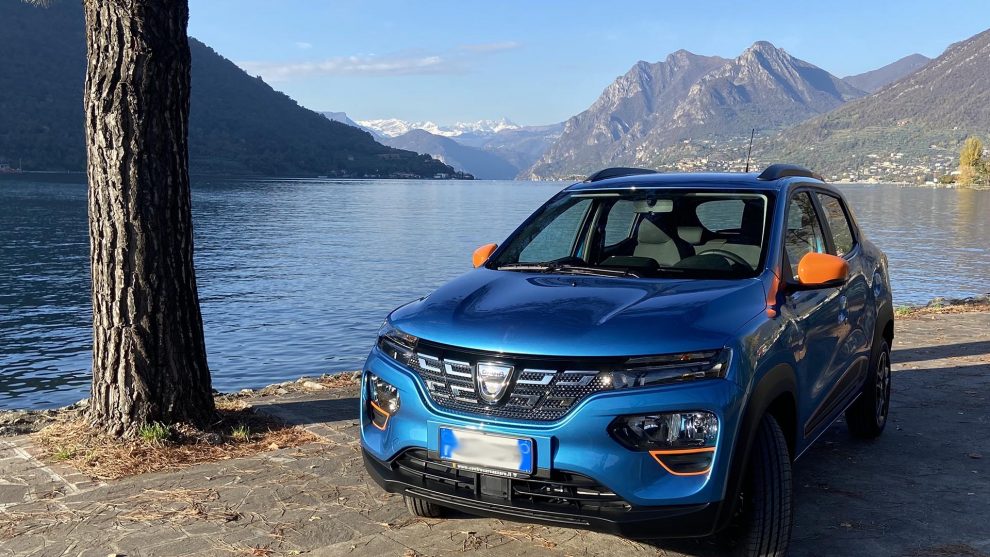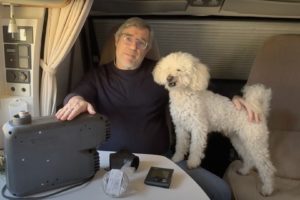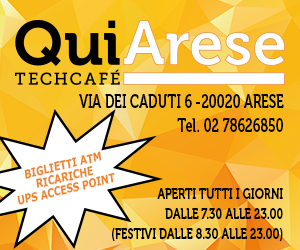January 19, 2022 – Talking too much about motorhomes can be boring in the end, don’t you think? No? Well, today we are talking about an electric car… What’s the point of having a personal blog if you can’t publish everything you want? 😂
Since a battery-powered car has been in our availability for a few months (it is Paolo’s mother’s car) and since we had to visit our Falkor temporarily hospitalized at the Gulliver’s workshop, today we want to tell you about our driving experience with a Dacia Spring over medium distance. Nothing scientific, but only what we have actually tried.
For the uninitiated, the Dacia Spring is the “real” electric car (that is, excluding those that can also be driven with a “license”) the cheapest ever, costing in Italy about €20,000 (almost 22,000 the most equipped version), and has a declared reasonable range: 230 kilometers in the WLTP cycle which can become 305 in the city if conditions are optimal. It is very controversial for its decidedly economical car setting, but in reality it has very respectable features.
We use a Comfort Plus picked up in October with which we have driven 2,909 kilometers. The usual use is for errands in the area where we have been for a few months (distance between 5 and 30 kilometers) and to come and go from Milan to Iseo. This last route is about 110 kilometers, 80 of which are motorways.
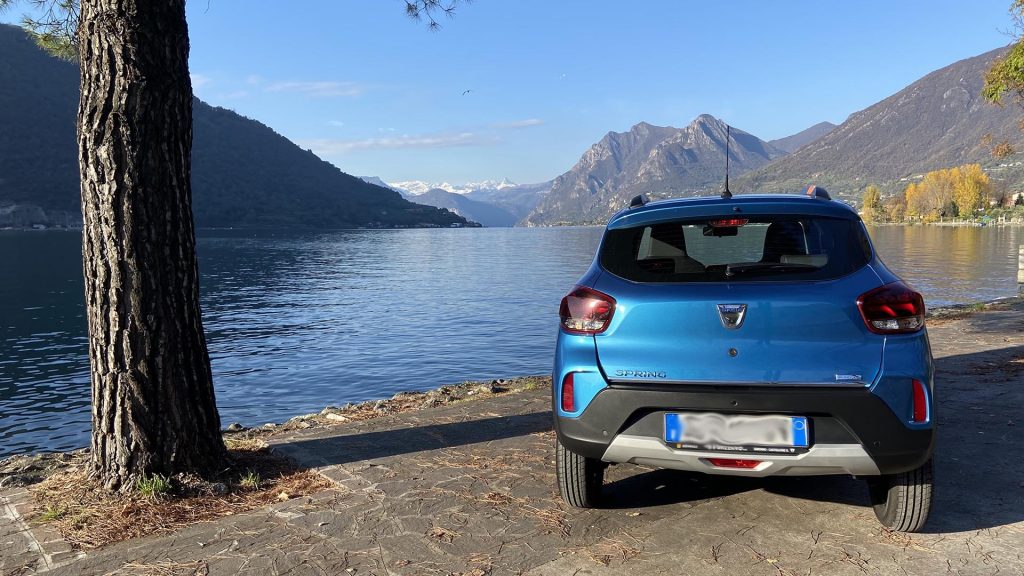
On average we cover 240 kilometers
The Spring in these conditions of use is perfect, even without a DC charger (which we could not have, as an option, as it was not available at the time of the order). The Milan-Iseo section usually leads to distances of about 160/200 kilometers: we will see later how the external temperature affects this value.
In ideal conditions, that is, with clear weather and temperatures between 15 and 20 degrees, on mixed routes and without a motorway, we cover an average of 240 kilometers. We do not make a purely urban use and therefore we do not aspire, nor could we do so, to the 305 declared. The values we achieve are usually in line with the expectations we had.
The idea of this post is to explain to newbies or doubters what can really be done with this car, knowing that the true autonomy depends on many elements. The main ones, in order of importance, are: type of road traveled, driving style, outside temperature, use of heating/air conditioning.
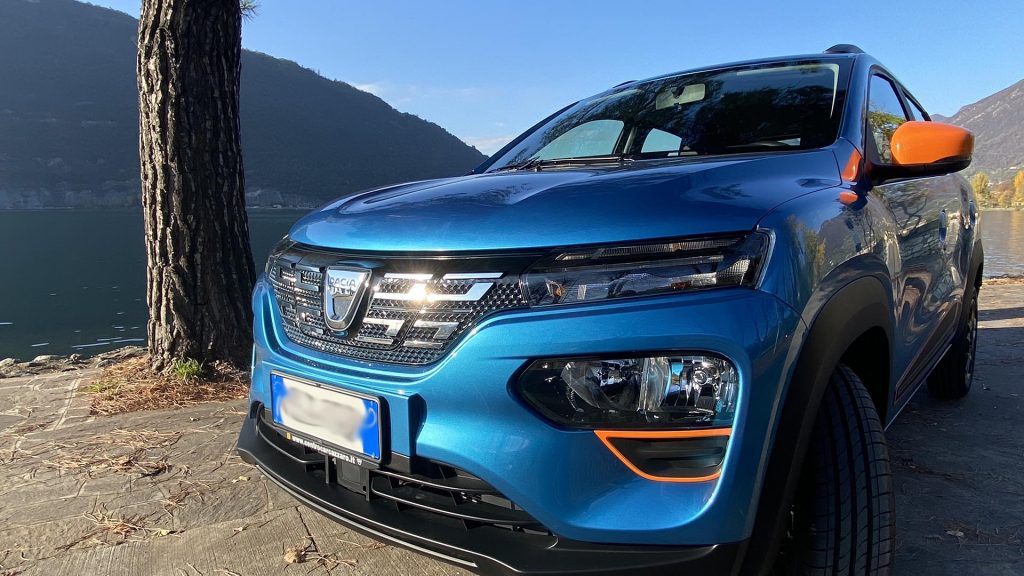
The parameters that affect autonomy
The first element makes a huge difference: even 120/130 km can “dance” between the entire motorway and the entire city route; driving style is just as important and can have a similar impact; the external temperature drastically reduces the autonomy when it drops below 5C°; heating and air conditioning can absorb 1/2 kW and in a one-hour journey means consuming between 1.5 and 3 percent of the battery. Obviously, therefore, that individual experiences can vary a lot.
The secondary objective of this long post is to clarify how what many people – perhaps not fully understanding how it works – scornfully call a “guesser”, that is the on-board computer that estimates the remaining autonomy, works. Many believe that by resetting the parameters the real autonomy can be extended: this is not the case. By resetting the values, the computer simply restarts from the preset average, that is 230 km, but as soon as it registers the driving style, the type of route, the temperature and the use of air conditioning/heater, it returns to offer a more truthful estimate.
But here’s our experience. In the last two days we wanted to try to experience the limits of our Spring.
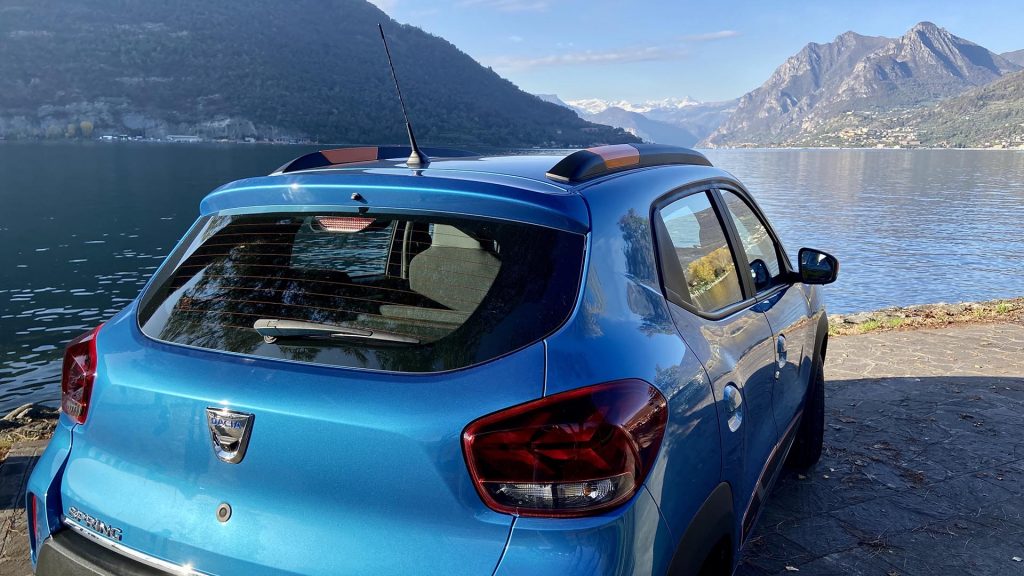
From Iseo to Santorso and back
The itinerary we followed is this: Iseo (BS) – Santorso (VI) for a total of 176 km using the motorway or 171 on urban, provincial, regional, and state roads. On the way out, for reasons of prudence and for an appointment fixed at a certain time, we preferred to take all urban and extra-urban roads, without setting foot on the motorway. We were therefore certain to arrive at our destination without worries, and so it was.
We left shortly after 9am with clear weather and a starting temperature of 3C°, which in the space of an hour rose to 12C°. No problem of substantial drop in battery performance. The on-board computer, specially reset before leaving, indicated 230 km of autonomy. After the start, the system adjusted to our driving behavior and recalculated the range forecast, which in the end proved to be spot on.
The kilometers traveled, 171, were for the most part on state roads with a limit of 70 or 90 km/h, crossing a city like Brescia and along the Verona ring road. The heat was always on in the substantially minimum position, with the knob indicator halfway between no heat and maximum heat. Traffic was light and smooth. Remaining range upon arrival: 20% battery and 45 kilometers estimated. I would say an excellent result.
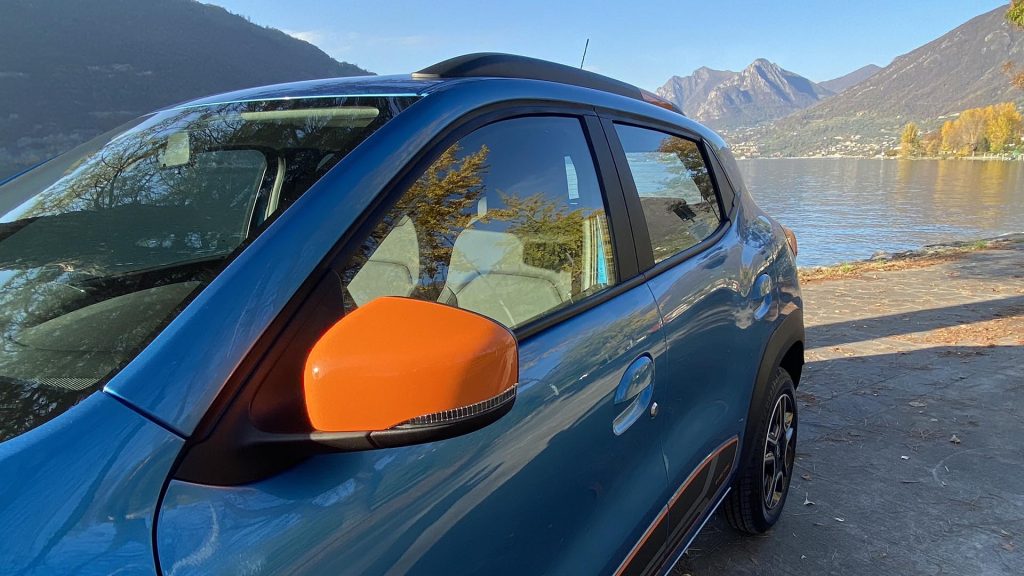
The ambitions grow
For this reason, today, on the way back, we have set the bar higher: fastest route and a total of 176 km, of which 140 on the motorway, 33 on 70/90 km/h state roads and 3 on local roads. At the start the weather saw the presence of fog and a temperature of 2C°, while from the middle of the route onwards the sun appeared, but it did not go beyond 8C°. And we feared we wouldn’t make it without replenishing energy…
After bringing the battery back to 100% last night (3.5 hours of charging at a 22-kW column from which the car takes just over 7), the computer indicated a range of 231 kilometers: the driving style yesterday, kept in memory, made him optimistic.
When we left, therefore, the “margin” we had was 53 km (231 estimated minus the 176 to go). In the first phase of the journey, after entering the motorway, the computer quickly revised its estimates, reducing the difference between the distance still to be traveled and the estimated range to about 30 kilometers.
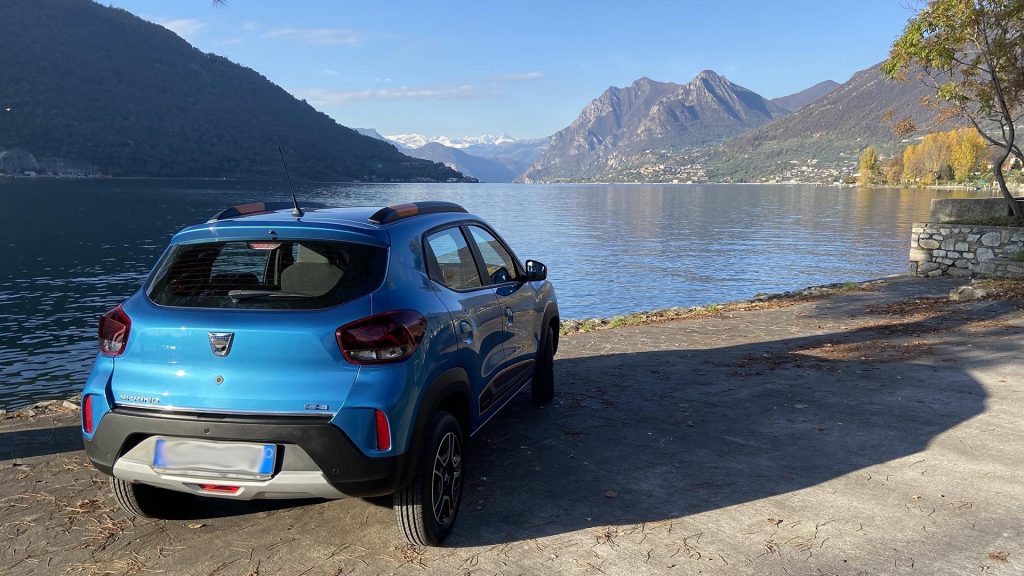
The Eco mode helps
Even on the motorway we have kept the Eco mode active (we usually don’t). Which is not particularly useful in general, but which helps in conditions like this to accelerate more slowly (this mode limits the power used) and which fixes the maximum speed at 100 km/h. This value allows you to be a little faster than the trucks and therefore to overtake them to have an unobstructed view. This way you don’t have to pay too much attention to the “foot”.
However, the difference in speed between Spring and truck led us to “abuse” the car: in order not to stay too long in the middle lane of the A4, we repeatedly resorted to the so-called “kick-down”, that is, we pressed the accelerator fully to tap into all available power and accelerate faster, thus temporarily bypassing Eco mode. However, never exceeding 105 km/h, but enough to complete overtaking more quickly.
It took a few tens of km to realize that this strategy would not have brought us home: the margin between the estimated range and the km to be traveled slowly thinned, until, with a value reduced to 10 kilometers, we decided to get in the wake of a truck, slightly lowering the top speed and avoiding overtaking. We then went to 85/95 km/h and the gap between the estimate and the remaining road has stabilized: we would have arrived home with a margin of 5/7 km!
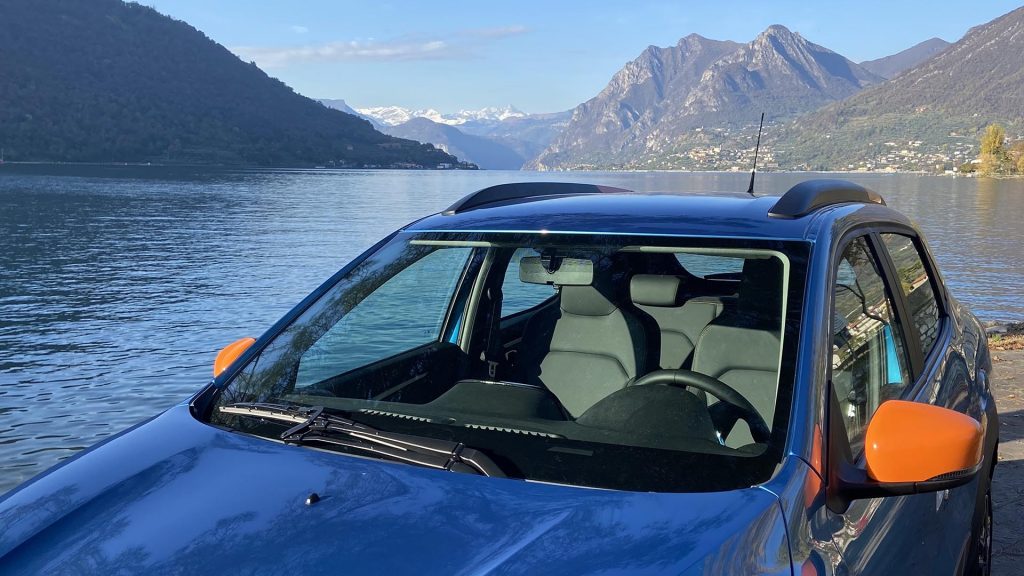
Don’t panic: ask the computer!
Spring is not good for anxious people though. If you rely on the on-board computer (and we did) you shouldn’t be impressed … When the estimate of the remaining km reached 30, the car-shaped indicator preceding the number of km began to blink. The goal was 25 km away… When the estimate dropped to 20 km, an orange battery-shaped light came on and the word “EV low battery” appeared, while at -10 km of residual estimate this value disappeared and the orange light has started flashing…
There were five kilometers to go, with the first three to go all uphill. The battery percentage was 5%. We maintained the same speed of 70 km/h and reached the top of the hill with 3% and two kilometers from home. From there, half of the route is downhill and with estimates no longer visible and lights flashing, we led the Spring into the garage, ending the journey with 2% of remaining charge. When the car was turned off and checked with the app, the percentage returned to 3% and the estimated km still to be traveled was 12.
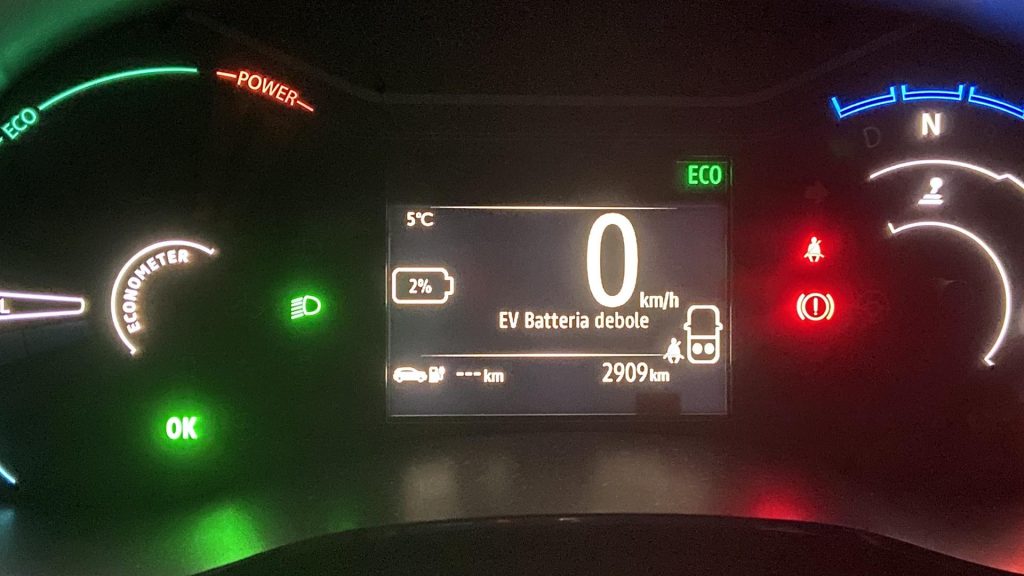
It can be done (with caution)
What have we learned from this experience? Knowing the car, understanding what factors influence consumption and relying on the on-board computer, even a demanding journey can be planned with sufficient precision. When we decided to do this test, we thought we could have about 180 km of autonomy following the motorway (which is why we avoided it on the way out) and experience (and the on-board computer) confirmed this.
The Spring is not the champion of great trips, and even by purchasing the DC option (which certainly helps) not everything is solved: in Italy, the columns capable of delivering 30-kW are still very rare and therefore they are not a guarantee of being able to recharge the machine in 50 minutes: more often it will be necessary to rely on 22-kW ones, much more common. A long journey, let’s say 600 km, would therefore require two stops for recharging, which with the timing of the Spring would turn into about 7/8 hours of parking with the base charger and about 3 with the DC (provided that the 22-kW delivers all its power, and sometimes it doesn’t).
However, the Spring consumes little, drives well, has more than enough acceleration and is spacious. The autonomy is better than other “small ones” and therefore in the end, for our needs, we are very happy with this car. It’s early for our Falkor, but we hope to be able to convert him on tap one day!
©2021 seimetri.it – If you want to leave a comment on this article, you can do it on our Facebook page





